Disaster recovery (DR) is an integral part of a sound IT strategy. In fact, it’s estimated that as much as 40% to 60% of small businesses never reopen after being affected by a disaster. This is either because they did not have a disaster recovery plan (DRP) in place, or had one but it failed to adhere to best practices.
At this point, you may be wondering, “what is the best method for disaster recovery?” In this article, we’ll examine five disaster recovery planning best practices. When followed correctly, these methods will ensure that your organization survives even the most unexpected disaster.
What is a Disaster?
A disaster is any unplanned incident, either deliberate or incidental, that leads to the unexpected disruption of your normal business operations. Though the specific type of disaster may vary, it will typically fall into one of three categories:
- Natural disasters
- Physical disasters
- Technological disasters
A disaster can affect any part of your IT infrastructure, from your data center to your cloud operations.
What is Disaster Recovery (DR)?
Disaster recovery is a set of contingencies made up of tools, processes, and policies that allow for the continuation of, as well as the restoration of, IT infrastructure following a disruption.
Fittingly, these are outlined in a document known as a disaster recovery plan (DRP). For instance, a data center disaster recovery plan broadly encompasses the entire contingency spectrum of data storage and recovery.
Once set in motion, the aim of a DRP is to prevent further damage, such as data loss or equipment failure, while establishing temporary alternative systems that allow work to continue.
Interested in learning more about disaster recovery best practices? Check out these blogs:
|
Disaster Recovery Methods: Recovery Time Objective (RTO)
Because every disaster is unique, each warrants their own unique solution. Likewise, each piece of damaged infrastructure merits its own recovery time objective (RTO). The RTO is the maximum amount of time a system can be down before causing major financial losses or operational failures.
For instance, a disaster that affects payroll could have an RTO of two weeks, whereas a disaster that disrupts a banking system running real-time transactions may have an RTO of essentially zero.
As a testament to the importance of adhering to recovery times, FEMA states that 90% of businesses fail within one year of a disaster if they are unable to restore their operations within five days.
In light of this fact, designing and implementing a DRP is infinitely more cost-effective than the alternative – going out of business.
Top 5 Disaster Recovery Planning Best Practices
1. Document and Share Your DRP
Developing a recovery process in the wake of a disaster is like trying to fortify the roof of your demolished house in the wake of an earthquake: it’s simply too late. Likewise, a plan that lives only in the minds of your DR team isn’t much help, either.
Once you’ve established disaster recovery strategies, it is critical to thoroughly document and distribute them to all relevant personnel. Each member of your team should have ready access to a copy of the DRP, especially when systems are down.

Credit: Christina @ wocintechchat.com
2. Focus on Your Vulnerabilities and Assets, Not Disaster Itself
Rather than working from a top-down perspective, develop your plan from the bottom up. In other words, don’t plan for each and every unique disaster.
Instead, identify your most critical data, assets, and services and determine their weaknesses. Now you can more efficiently generate a set of strategies to defend them, paying close attention to critical assets and security data.
3. Test Your Plan Regularly
Even the most sophisticated DR strategies are useless without regular testing. Testing is the only way to validate your strategies in real-world scenarios. It also provides opportunities to make adjustments to your DRP as new IT systems are introduced into your infrastructure, or in light of changing compliance regulations.
On the subject of disaster recovery testing best practices, here’s another piece of advice: Create a DR testing schedule and adhere to it with religious devotion.
An untested plan is worse than no plan at all because it promotes a false sense of security. Depending on the complexity of your organization’s IT infrastructure, aim to test at least once per year or more, depending on the complexity of the environment.
Bring Disaster Recovery Planning Best Practices to Your BusinessEnsure the safety of your critical data with a DR plan from TAG. |
4. Demand High-Quality Reporting
Reporting is a key part of disaster recovery, from test reports to on-ground reports. Test reports shed insight into your DRP’s strengths and weaknesses during a simulated disaster.
You will receive real-time communication during the event, followed by a detailed report of the results post-disaster. These will become indispensable reference tools when preparing for future disasters as well.
5. Plan for Business As Usual
Though the goal of a DRP is a return to normalcy, it shouldn’t be considered the light at the end of the tunnel. In fact, things can be surprisingly rocky even once you’re back up and running.
That’s why it’s necessary to plan for a return to normal operations. This falls into your broader contingency strategy, known as business continuity planning. A well-formulated business continuity plan (BCP) allows you to continue operations both through a disaster and afterwards.
Your Trusted Source for Backup and Disaster Recovery
When disaster strikes, the last thing you want is to be unprepared. For over 25 years, Technology Advisory Group has helped businesses in Rhode Island and New England design and implement comprehensive disaster recovery plans to meet their unique needs.
Contact us today to discover how we can take your backup and disaster recovery planning to the next level.
Schedule Your Cloud Services Consultation
Ready to make a move to the cloud? TAG is ready to help with any or all cloud services from a private cloud, public cloud, or Microsoft 365 services.
